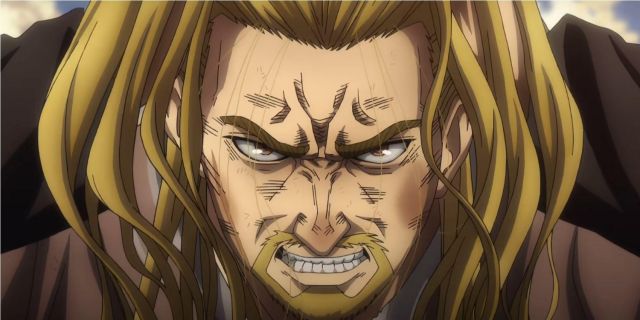Fans of Vinland Saga had come to enjoy the intense combat, Thorfinn’s heart-wrenching trauma and how he processed his emotions, and the medieval militaristic conflicts across the Anglo-Saxon world. The exploits of Thorfinn and Askeladd were both enthralling and nail-biting, and the fated duel between them was the linchpin that held their relationship together. As Season 1 ended, Askeladd was cut down by Canute and Thorfinn lost his driving force within the story.
However, Season 2 took a vastly different direction. Everything about the series shifted gear, and the characters are immensely different from what fans remembered as the plot refocused from war and conflict to almost purely internal conflicts and motivations. The anime follows the manga, progressing how it was intended and asking many insightful questions about change, humanity and new beginnings. Unfortunately though, that wasn’t the show fans were introduced to, and the narrative remained in this state for the majority of the series until now in its closing episodes.
Vinland Saga Focused on a New Direction But Forgot What Made It Popular

The drastic change to the structure of Vinland Saga seemed to create an entirely new anime series. Long gone were the days of risky infiltrations, large-scale battles and constant depictions of brutality. Instead, the anime became a reflection on the past within the relatively safe boundaries of servitude and farming. Thorfinn and Einar’s positions were not entirely ideal, but with Ketil serving as a benevolent — at first — master, they did not need to fear death at the edge of a sword. This took away a major factor from the series: the fear of death. The conflict thus instead revolved around Thorfinn’s acceptance of his past and ensuring the quota was met for his crops.
While the story itself was still strong, two major issues negatively affected the series’ popularity. First, the development of Thorfinn was certainly vital in the progression of the series, but the lack of story progression dragged on for several episodes, and repeated conversations between Thorfinn and Einar sometimes lasted the entire second half of some episodes. This snail-like pacing only added weight to the already much slower plot from the previous season. Second, this issue bled into Thorfinn as a character. He no longer had direction, ambition or desire. While this may be acceptable for a brief period for a protagonist, going for 15 episodes without a driven protagonist unsurprisingly led the audience to lose interest.
Vinland Saga’s Return to External Conflict Happened Too Late

In the final stretch of the series, the battle between Ketil and Canute exploded into ferocious combat. The once-forgotten concept of war returned to the screen, and audiences were reminded of one of the major reasons for Vinland Saga’s initial popularity. Meaningless violence was not what made the series so beloved, but the realistic depiction of medieval combat certainly heightened the intensity of the series, mainly through Thorfinn’s actions. Although the lack of combat was important for Thorfinn’s progression, the length of time it was absent from the show alongside the lack of the main protagonist’s goal only diminished the amount of viewer interest that the series formerly enjoyed.
Season 2’s 24-episode stretch is now coming to an end, and the reintroduction of major stakes, conflict and hero direction has come too late. Many viewers have already moved on, perhaps to return one day when they won’t need to wait an entire week between episodes of repetitive conversation. Even so, the series’ pacing has dramatically improved over the last couple of episodes, moving the story along with grim purpose. If this trend continues into Season 3, there is still hope that Vinland Saga can once again take hold of what made it so exciting to begin with: a driven protagonist, a balance of external and internal conflict and swift, smooth pacing.















Leave a Reply